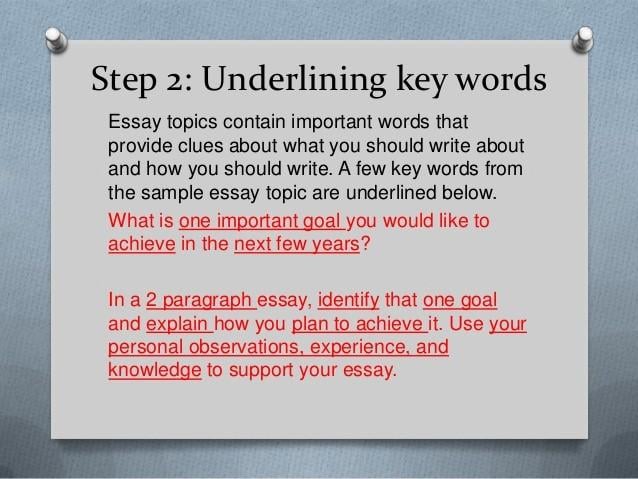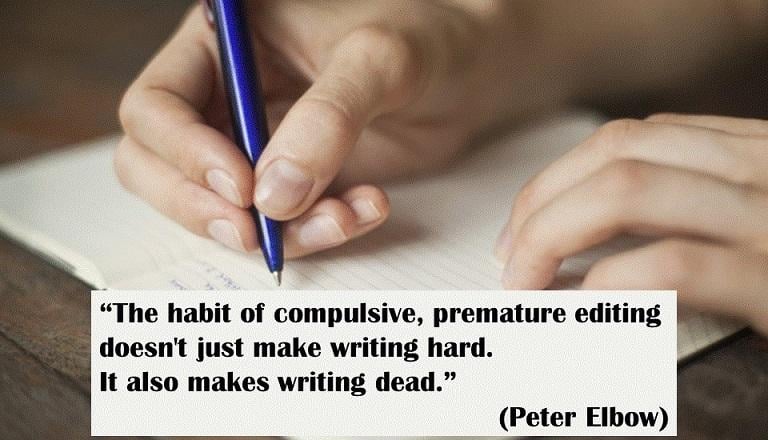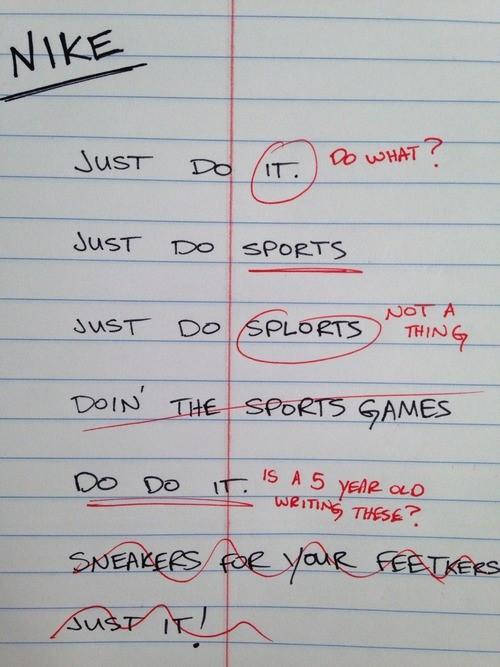Starting with a blank page is never a good idea. For me, it’s the quickest way to realize I need to check my inbox one more time. Or finally organize the files on my desktop. Or run to grab a coffee so that I can focus. (I don’t think I need to tell you that these coffees don’t do much for focus.)
The bottom line is that, whether I’m writing an email or a blog post or a tagline, if I don’t start with some words on a page right away—or, better yet, already there—I have a very hard time getting started writing at all. That’s where copywriting tips and exercises help.
Copywriting exercises are like warm-ups; but instead of lunges or jumping jacks to get you moving, they’re short little prompts to help ease you into writing. By giving you a head start at generating or planning your writing, these prompts help you focus your copy before you even jump into the project at hand—or reset when you hit a wall that you can’t write through.

Whether you need to avoid the blank page or revise a project you’re stuck on, here are 10 quick, easy copywriting tips and exercises to help you start writing better copy sooner.
1. Write down the requirements
Most of us aren’t starting from scratch. We have a medium and, likely, we have a topic and goal. That could be writing a Google Ads headline for your dog walking business. It could be drafting Facebook posts for your restaurant. It could even be writing a blog post about copywriting exercises.
If you have this information—the medium, the topic, and the goal—use that to get started. Are there word count goals or restrictions? Will the copywriting appear on a blog, on product packaging, or on social? Is this a blog post, a PPC ad, or a video script? Jot all those details down at the top of the page so they stay top-of-mind.

Remember underlining key words in school writing prompts? Same idea.
From here, you should be able to identify the audience, the scope, and the purpose. Write that down, too. Once you have that, you have a clearly outlined project. And, well, you’ve started copywriting.
2. Rewrite your favorite ad
A good way to get started is to start with something else. Have an ad campaign that you loved? A blog post you always use in your portfolio? A favorite commercial?
Grab those copywriting examples, read them, watch them, and then rewrite them. Rework that ad campaign so that it’s applicable to your company. Take the best part of your blog post—the introduction, the title, the structure—and brainstorm how to use it again. Rewrite your favorite commercial for your company’s latest product or service launch.
Rewriting is writing—and who knows, maybe you’ll stumble onto something great!
3. Draw your assignment or idea
Not at all copywriting exercises have to include words. Hear me out.
Sometimes, the project at hand can be messy. Maybe you’re writing YouTube video scripts for a product launch. Maybe you’re working on email drafts for a new nurture path. For big projects like these, with lots of moving parts and little pieces, figuring out where to start writing can be challenging.
Less challenging? Drawing out the structure.

A visual representation of sentences in On the Road that might actually be more challenging…
Use different shapes to represent the pieces of copy, and arrange them in order. Grab some scissors, cut them out, and rearrange if needed. Visualizing this helps—and pinning down the structure is such an important step.
4. Do a 10-minute free write
Can’t bring yourself to start writing those headlines or product descriptions? Give your brain a break and free write.
Freewriting is an exercise that requires timed continuous writing with no oversight and, most importantly, no feedback—that means no worrying about grammar, no stress about getting off topic, no need to even set a topic, and no requirement to show anyone or look at it ever again. Championed by Peter Elbow in the 1970s, this practice has made its way into classrooms everywhere because writing is an iterative process and learning to generate without oversight or feedback is an important part of it.

That’s also exactly why it can help you as a copywriting exercise. So set a timer for 10 minutes and grab an actual pen and paper, and let yourself get started without any rules.
5. Find some data
A lot of copywriting will require research, but all copywriting can benefit from it. Take time to read industry sources on your topic, check out relevant Twitter threads, ask an expert, review your account for interesting data.
In some cases, this research can help you write the copy.
But even if it doesn’t make it into the final product, having the background will make the copywriting stronger—and make the copy better.
6. Skip your intro—for now
This copywriting technique is mostly applicable to longer content, like blog posts, whitepapers, and ebooks. If you’re having trouble getting started, just jump right into your first topic and skip right over the introduction.
An ideal introduction does a few specific things: establishes the tone of the content, introduces the topic, and set expectations for the reader. If the ebook is a guide to Google Merchant Center, for instance, the introduction should tell the reader what topics will be covered, how the topics will be broken down and arranged, and what they’ll learn after reading.
Before you’ve written the piece, you don’t know this and can’t always tell the reader what to expect. So don’t waste time trying if it’s not helping you write—skip the intro and go back once the scope is clear when the rest of the content is complete.
7. Read your writing aloud
Unless you’re writing a podcast or video script, it’s easy to forget that even marketing copy will not just be consumed or even scanned, but read. And when people read, they sound out and even hear the words as a part of their inner speech in a process known as subvocalization.
So read your work aloud and make sure to listen. Did you trip over any phrases? Did you catch an accidental rhyme or a tricky string of words? Did you have a hard time following? Rewrite.

Things just sound different when you’re reading aloud.
8. Talk with a coworker
Now that you’re up and talking anyway grab a coworker. Explaining your current project to someone else is a great way to figure out how to summarize and present your ideas—and, from there, how to tackle the copy.
Plus, that’s a way to turn your procrastination coffee into a guilt-free productive coffee.
9. Summarize your project in a single sentence
This is a great copywriting exercise for getting yourself un-stuck or for starting a new project.
Consider what you’re writing: the format, the purpose, the scope, the audience. Then, summarize in a single sentence.

Be sure it’s clear, concise, and accurate—and if you’re having a really hard time with this, it’s a good indication that you need to spend more time considering the project before you get to copywriting.
10. Just write a shitty first draft
I had a professor in college put it this way: You never have to marry your first draft. You don’t have to commit—you don’t even have to love it. In most cases, you’re going to have to revise after content editing, anyway.

Even the best ads likely had some shitty first drafts.
This can seem daunting—a never-ending loop of revisions could mean looking at the blog post or product page forever—but it can also be liberating. Give yourself permission to start with some terrible ideas and write blunt and ugly sentences you wouldn’t want your boss to see. Use a shitty draft to work out your ideas and get started.
Just be sure to remember to go back and edit.
And, finally, keep these copywriting tips handy!
Here’s a quick review of these 10 copywriting tips:
- Write down your requirements
- Rewrite your favorite ad
- Draw your assignment or idea
- Freewrite
- Find some data
- Skip your intro—for now
- Read your writing aloud
- Talk with a coworker
- Summarize your project in a sentence
- Write a shitty first draft
If you’re writing ad copy or blog posts now, it’s likely you’re going to have to do it again—so save yourself time and energy, and use these copywriting tips and exercises as many times as you need to jump back into writing!







